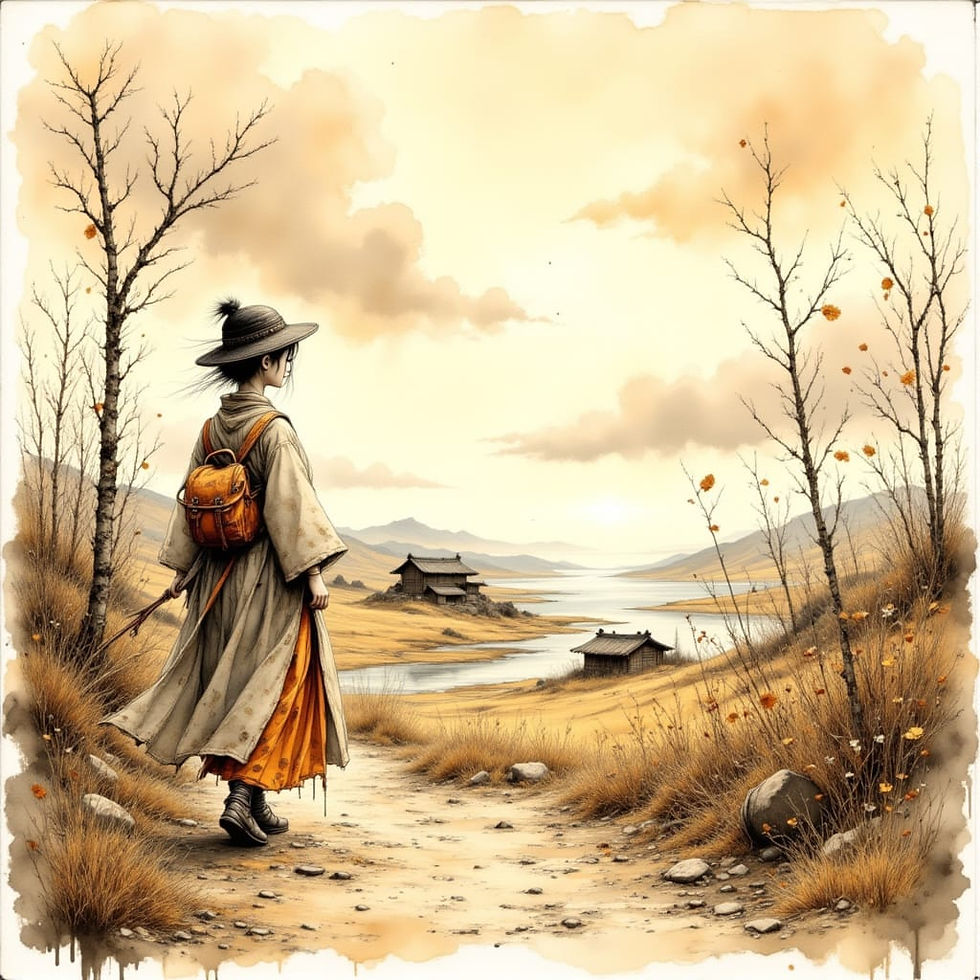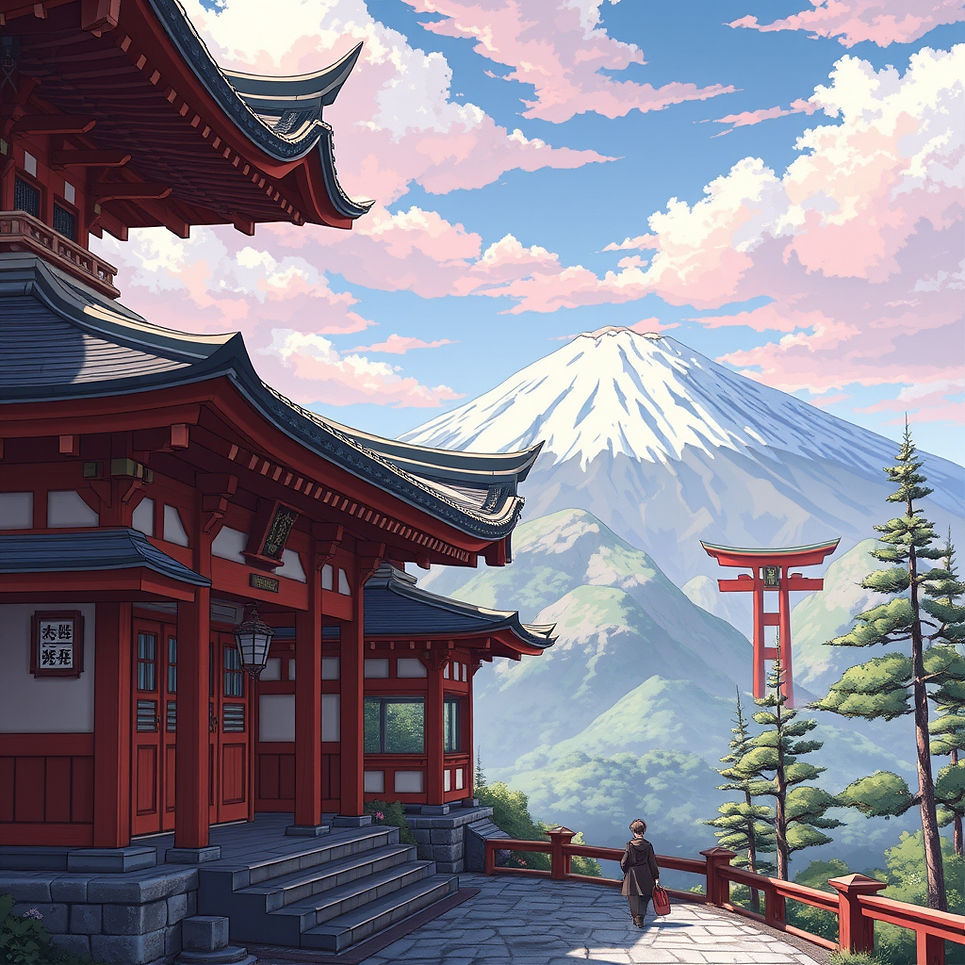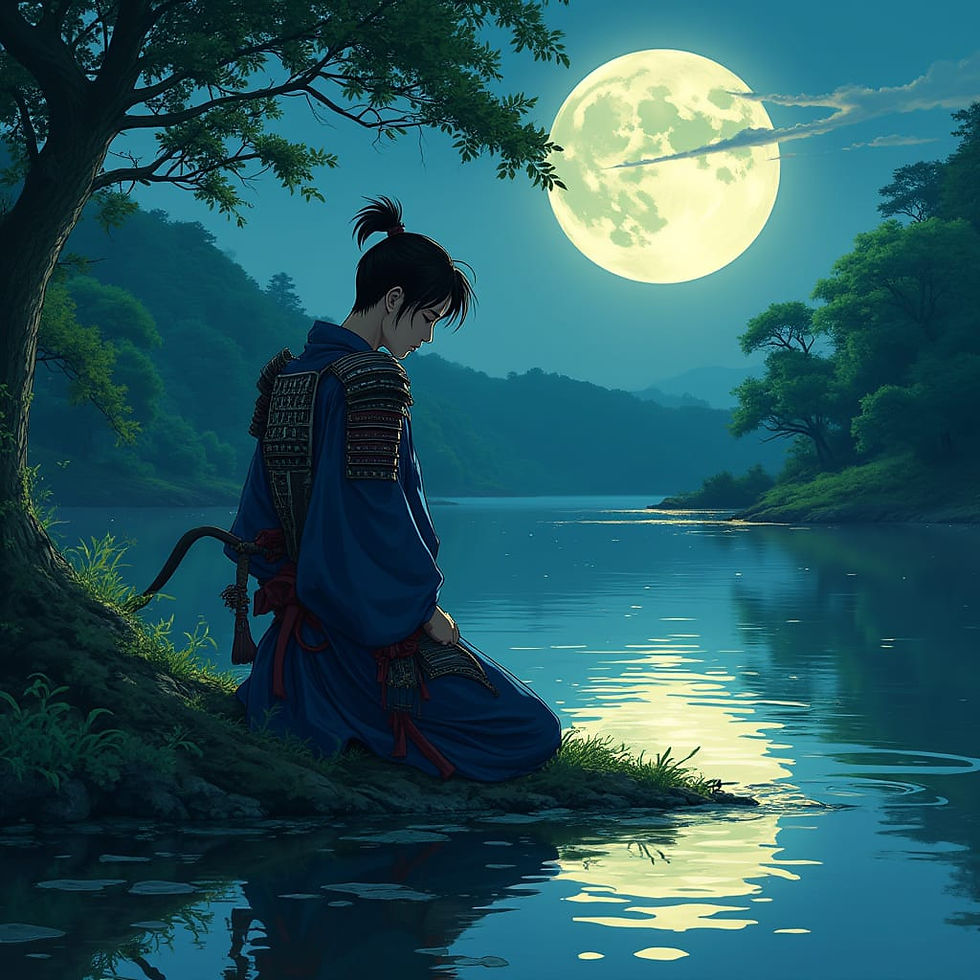From Shogunate's Dawn to a Land Divided: The Unfolding Saga of the Samurai
- Larisa Ion
- Jun 23
- 5 min read
With the Kamakura Shogunate firmly established in 1192, Japan entered an era dominated by military rule. The samurai, once mere attendants, were now the custodians of the realm, their lives guided by the pursuit of martial excellence and a burgeoning code of honor. Yet, their path forward was far from smooth, marked by formidable challenges from both within and beyond Japan's shores.
The Kamakura Years: Stability, Storms, and Shifting Sands

For over a century, the Kamakura Shogunate brought a degree of stability to Japan. The samurai, now serving as shugo (military governors) and jitō (estate stewards), diligently managed the provinces, ensuring order and collecting revenue. It was during this period that the values that would later be formalized as Bushido – the Way of the Warrior – began to coalesce. Loyalty, discipline, and a willingness to face death became hallmarks of the samurai ethos.
However, a grave threat emerged from across the seas. In the late 13th century, Japan faced two immense invasions by the Mongol Empire, led by the formidable Kublai Khan. These were truly existential moments. The samurai, though outnumbered, fought with desperate bravery, their ferocity combined with timely "divine winds" (typhoons, or kamikaze) that decimated the Mongol fleets. These victories, while preserving Japan's independence, stretched the shogunate's resources to their limit and failed to yield new lands or wealth for the victorious warriors, leading to growing discontent among them.
Eventually, internal strife began to fray the shogunate's fabric. Succession disputes and a weakening central authority led to a period of civil war, known as the Kenmu Restoration (1333-1336), which saw the brief reassertion of imperial power before it was once again eclipsed.

A New Shogunate and the Descent into Chaos: The Muromachi Period
From the ashes of the Kamakura Shogunate, a new military government arose, founded by Ashikaga Takauji in 1336, establishing the Muromachi Shogunate (also known as the Ashikaga Shogunate). While this shogunate nominally ruled for over 200 years, its power was often less centralized than its predecessor's. The Ashikaga shoguns chose to reside in Kyoto, closer to the emperor, but this often meant they were more susceptible to court intrigue and reliant on the support of powerful regional lords.
The period saw a flourishing of distinct Japanese arts and culture, including the development of Zen gardens, the tea ceremony, and Noh theater, often patronized by the samurai elite. Yet, beneath this cultural refinement, the seeds of instability were quietly germinating. The shogunate's authority gradually eroded, and regional daimyo – powerful feudal lords – began to amass independent power, building their own armies and fortresses.
This simmering decentralization finally erupted into full-blown conflict with the Ōnin War (1467-1477). This devastating, decade-long civil war, initially sparked by a succession dispute within the Ashikaga family, spiraled into a nationwide conflagration, effectively destroying the shogunate's remaining authority and turning Kyoto into a battlefield.

The Warring States: An Age of Unending Conflict
The Ōnin War ushered in the infamous Sengoku Jidai (roughly 1467-1603), often translated as the "Warring States Period." This was arguably the most dramatic and brutal chapter in samurai history. For over a century, Japan was plunged into a relentless cycle of internecine warfare. There was no effective central government; instead, hundreds of daimyo and their samurai armies battled endlessly for territory, resources, and supremacy.
In this age of constant conflict, the role of the samurai intensified. They were no longer just guardians of estates but professional soldiers, their lives defined by battle. New tactics emerged, castles became more sophisticated, and the introduction of firearms by Portuguese traders in the mid-16th century revolutionized warfare. Loyalty shifted from traditional ties to strategic alliances, and many samurai, particularly those whose lords had fallen, became rōnin – masterless warriors who often offered their services to the highest bidder. It was a time of great destruction, but also of immense opportunity for skilled and ambitious warriors.

The Great Unifiers and the Long Peace
Out of this crucible of chaos, three extraordinary figures emerged, often referred to as the "Great Unifiers" of Japan, each playing a crucial role in bringing the long century of war to an end:
Oda Nobunaga: A brilliant and ruthless tactician, he began the process of unification, conquering vast territories and embracing the use of firearms. However, his life was cut short by betrayal.
Toyotomi Hideyoshi: A peasant by birth who rose through Nobunaga's ranks through sheer talent, he continued the unification, bringing most of Japan under his control through a combination of military prowess and shrewd diplomacy. He also disarmed the peasantry, solidifying the samurai's monopoly on warfare.
Tokugawa Ieyasu: The last of the unifiers, Ieyasu strategically bided his time. After Hideyoshi's death, he solidified his power at the decisive Battle of Sekigahara in 1600, vanquishing all rival daimyo.
In 1603, Tokugawa Ieyasu established the Tokugawa Shogunate in Edo (modern-day Tokyo), ushering in a period of unprecedented peace and stability that would last for over 250 years.
The Samurai in a Time of Peace: From Warrior to Bureaucrat
The Tokugawa Period (Edo Period, 1603-1868) brought an end to constant warfare, which profoundly changed the samurai's role. With no major battles to fight, their martial skills became less critical for daily governance. The shogunate enforced strict social hierarchies, placing the samurai at the top. However, they slowly transformed from active warriors into bureaucrats, administrators, and civil servants. They often lived in castle towns, managing their lords' domains, engaging in scholarly pursuits, and upholding the bushido code more as a moral guide than a direct call to arms. The sword, while still a symbol of their status, became less a tool of war and more a ceremonial emblem. Many samurai found their traditional military skills increasingly irrelevant in an age of peace, leading to internal struggles about their identity and purpose.

The Final Chapter: The Meiji Restoration
The ultimate end of the samurai era arrived with the Meiji Restoration in 1868. Facing pressure from Western powers and internal dissatisfaction with the shogunate, the imperial court, with the support of various influential domains (often led by samurai who desired modernization), overthrew the Tokugawa Shogunate. The new Meiji government sought to rapidly modernize Japan, aiming to become a strong, centralized nation-state.
This modernization meant dismantling the old feudal system, and the samurai class was abolished. Their traditional privileges, including the right to wear swords in public, were gradually stripped away. Many former samurai found new roles in the military, police, government, or business, but the distinct warrior class, with its unique way of life and hereditary status, faded into history.
Thus, the journey of the samurai came full circle: from humble armed servants, through centuries of warrior dominance and devastating conflict, to becoming the administrators of peace, and finally, to their dissolution as a privileged class in a rapidly modernizing nation. Their legacy, however, remains deeply etched in the heart of Japanese culture.




Comments